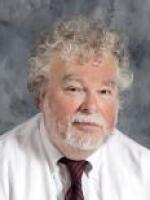It's a new world, with predictive analytics and artificial intelligence at work helping run Buffalo's sewer system. More and more of the system is being called "smart sewers."

The Buffalo Sewer Authority is finishing up a project at Bailey and Delavan in the city's Kenfield neighborhood, is well underway on tunnels at Hertel and Deer on the edge of Riverside and three more are in design to go with projects already built. That includes the massive twin 8' tunnels under much of Hertel in North Buffalo.
"Dual 8'-foot sewers as they head over in our system to our North Interceptor," said Authority General Manager Oluluwole McFoy. "So we're actually placing a box in the ground that is going to intercept those storm water flows when it rains and make sure that those flows don't just go into our waterways, don't just make its way to Cornelius Creek or to the Niagara River, but actually get treated."
They are all for storage of water flooding the sewer system at a time of heavy rain or a lot of melting snow. Each project is different, as the authority moves toward its goal of 16 smart sewer complexes across Buffalo.
"These are the best for our system because we are utilizing our existing system," said McFoy. "We are utilizing just the robustness of our system, being a system that was built for a city that was going to be three/quarters of a million people and yet we're only around about a third of that. So we are able to use that capacity that we have in our system for storage."
The projects reflect a legally binding contract with the U.S. Environmental Protection Agency to stop overflows of combined sewerage into area waterways. The authority committed to a $400 million plan to end overflows.

The artificial intelligence and predictive analytics are controlling these giant tunnels under city streets with computer-controlled valves, deciding when the mix of sewage and storm runoff inside can flow to the Bird Island treatment plant without moving through an overflow valve into a local waterway. A tunnel under Bird Avenue is already cutting heavy flows by 30 percent by holding the waste.
McFoy said each project affects traffic patterns differently, like the Hertel and Deer project.
"That one actually has a different kind of construction because it's two different barrels that are coming into one box," McFoy said. "We have two 8'-diameter sewers that are going to come into the one box. That is the reason why we had to close down the roadway because of the width of the box that we had to do. That's actually going to be almost from curb to curb and we couldn't safely allow traffic to get past that site."








